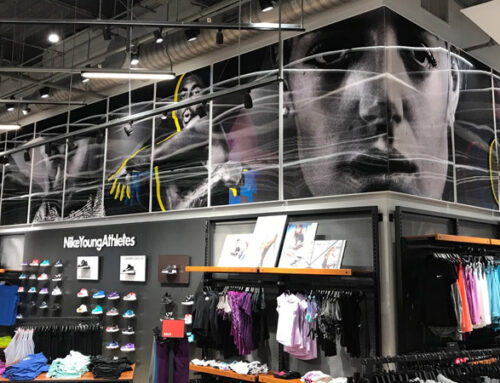How Exactly Does Lenticular Printing Work?
Well first of all, WELCOME to World3D! If you’ve found this page through a search on the word “lenticular” we invite you to start at the beginning by visiting the home page where you can kick off your project or fact finding mission. We’re real people here to help and ready to answer all of your questions.
So with that said, what is lenticular printing and how does it work?
Lenticular printing is a special technique that can be used to create unique 3D or animated images. This technique can either employ multiple images to create the appearance of animation as the lenticular image is moved up and down or side to side or to multiple layers of a single image to create a 3D appearance.
What is Lenticular Printing?
The name lenticular printing is a bit confusing for those who are new to it it as the name actually derives from the materials the images are printed on as well as the technique itself. This technique involves printing a special image onto a piece of plastic that is formed of tiny lenticules, which are in essence minute lenses.
Although most people are unfamiliar with the term, it is highly likely that everyone has encountered some type of lenticular images in their lifetime. For instance, they have been used for years as premiums in cereal boxes and 3D baseball cards that show depth or movement. In recent years, they have often been used as DVD covers for some of Hollywood’s largest releases as well as in store displays at large retail stores.
How Does Lenticular Printing Work?
One of the first questions most people ask is how does lenticular printing work? The answer often surprises people as lenticular printing isn’t all that complicated at it’s core. What a lenticular printing company does is to take each digital image and cut it into strips.
These strips are then interlaced together in alternating order to create a composite of the images. Viewed on its own, this composite image doesn’t look like all that much. However, this is where the special lenticular lens comes in. By printing the composite image onto the back of the lens, a lenticular printing company can create images that look like they move or give an image a greater depth of field so that it appears three dimensional.
The reason that this works is due to the special lenticular lens. When creating animated images, lens diffraction causes you to be able to see only the stripes from one image at a time with the image that you see depending on the angle at which you are viewing it. This gives the appearance of animation as you change the angle of viewing and the the images cycle.
A similar, albeit slightly different effect creates the appearance of stereoscopic depth in 3D lenticular images. In this case, the lenses diffract the light so that each of your eyes sees a slightly different image that tricks your brain into seeing depth.
Types of Lenticular Images
One reason that the question of what lenticular printing is brings with a lot of confusion is the fact that the technique can be used to achieve two entirely different types of images—animated and stereoscopic 3D.
The term lenticular animation can apply to a range of different types of images, all of which give the appearance of movement as a person walks past the image or moves it up and down. The simplest type is a flip image, which basically switches back and forth between one image and another depending on the viewing angle.
Multiple images can also be layered together to create the same effect, and if enough images are interlaced, it can result in quite lifelike animations. In addition, by layering progressively larger images together, a lenticular image can be created that gives the effect of zooming in or out.
Unlike the animated images, a 3D lenticular image doesn’t give the appearance of movement and looks the same no matter what angle it is viewed from. Instead of layering different images together, a single image is separated into multiple layers. By interlacing these different layers together, the technique can be used to create the appearance of depth between the various elements in the image.
When creating animated lenticular images, the original digital images can be split either vertically or horizontally with the lens then matching that direction. This choice affects whether the animation will occur when the viewing angle changes from left to right or up and down. Most people choose to split the images horizontally so that the animation will occur as the card is tilted up and down and this choice tends to work better. However, if the piece is going to be displayed and people will be walking by it, the natural choice will be a vertical lens for left/right animation. People walk by the image, they don’t usually jump up and down! Stereoscopic 3D lenticular images are always split vertically and thus feature vertical lenticular lens.
The basics of lenticular printing isn’t all that complicated. However, it does take skill and knowledge to know how to properly interlace the images so that they match the corresponding lenses and getting great results takes a lot of experience. This is why it’s important to choose an experienced lenticular printing company to ensure ideal results.
The Company to Trust
When your company is ready for a new marketing approach with a twist, trust the experts at World3D with your lenticular printing needs. Our team has been producing lenticular projects for over 25 years, and have served marketers, ad agencies, and companies of all sizes. Contact us today to get started on your next eye-catching promotion.





